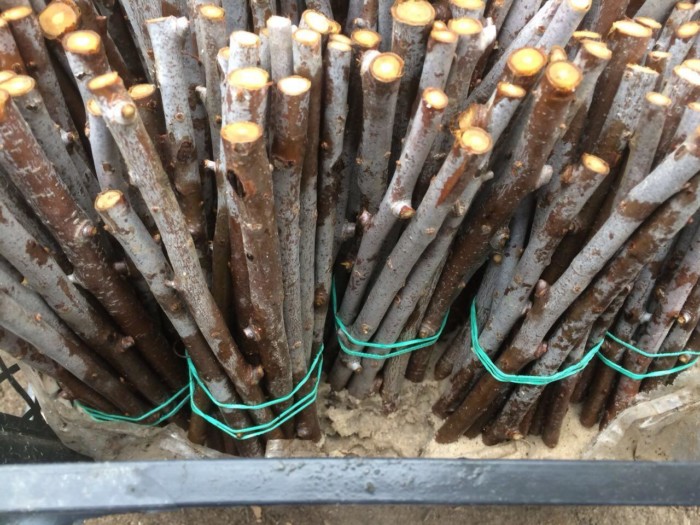How to store cut cuttings until grafting and propagation
Gardeners are happy because nature has given the opportunity to take cuttings from plants. Thus, it turns out to get one or another variety of bush or tree you like in a short time.
The main thing in this matter is to make the cutting on time and properly preserve the cuttings for grafting and rooting. Naturally, you will have to save the desired material obtained during the cold season, because summer cuttings can be “planted” immediately.
How are cuttings stored?

To preserve cuttings in a suitable form until the required period, you must carefully follow the recommendations of experienced gardeners. It is worth mentioning that not all specimens will be able to survive until rooting and grafting, so you need to remember this when harvesting them and cut off a third more than necessary.
To prepare the cuttings for storage, you need to follow two simple processes: tie them into bundles with twine and leave a label on each (saying the variety or type of plant). There are several effective, proven ways to save cuttings.
In a snow pile
Cuttings are stored in a pile of snow when they do not need to be checked periodically. To build such a “structure”, you need to dig a recess (30-35 cm) in an elevated, shaded place. Its bottom should be covered with a thick (5-7 cm) layer of spruce branches, cuttings should be placed on it and covered with spruce branches.Then the trench must be filled with soil and when snow appears, cover everything with it (the snow cap should be up to 50 cm high).
In the sawdust
Gardeners who live in places where winters are warm every year make storage for cuttings from frozen sawdust. First you need to choose a place on the site, which is located on the north side, then pour a ball of moistened sawdust or shavings (10-15 cm) there, spread the material for future grafting on them, cover them with the same ball of wet sawdust, and pour on top of them ball (30-40 cm) dry. Such cover of the petioles must be covered with polyethylene. Sawdust can not be moistened with water itself, but it is better to add carbolic acid to it (50 g per 10 liters of water). Thus, rodents will not want to feast on the cuttings.
In the cellar

It is very important that in the basement the thermometer readings fluctuate between 0 and 1°C, and the air humidity does not exceed the 65-70% mark. Otherwise, it will not be suitable for storing petioles. Before sending for storage, the branches should be placed cut side down in a box with damp sand or sawdust. It is important that they do not dry out; this must be monitored periodically.
If there is a large amount of scion, then immediately after cutting it is placed for storage in small boxes, filled with sawdust or washed sand and covered with a ball of one or another substrate on top.
Just a few sticks of cuttings (3-4) can be stuck into large potato and put them stored on a shelf or floor in the basement. There is another way to save a small number of petioles. They can be stored in refrigeration device, wrapped in a wet piece of fabric, in a tightly tied plastic bag (this will prevent moisture from evaporating).
Each of the methods allows you to save the cuttings until the right time, the main thing is to consider all the details of this rather labor-intensive process as important.
See the video from gardener Alexander Mikolenok “When to harvest and how to store cuttings for spring and winter grafting”:






















